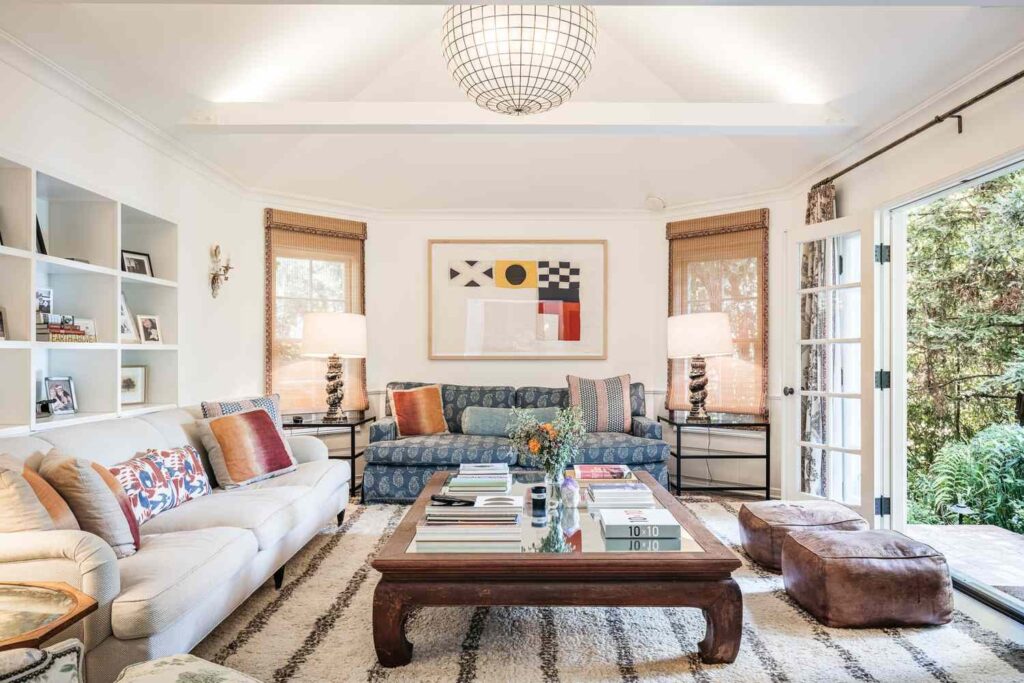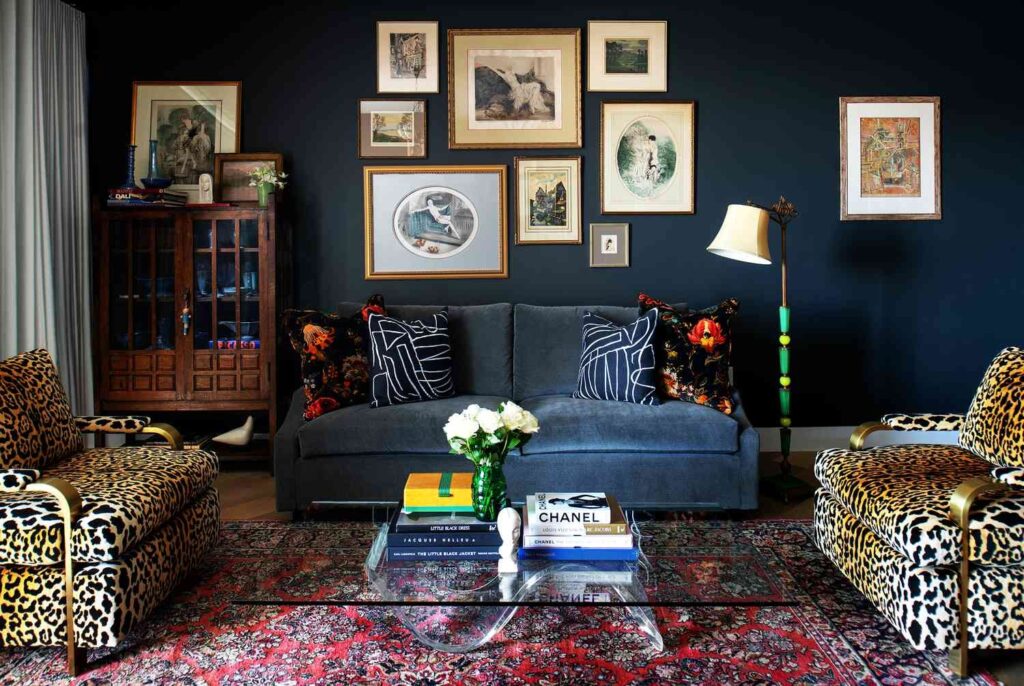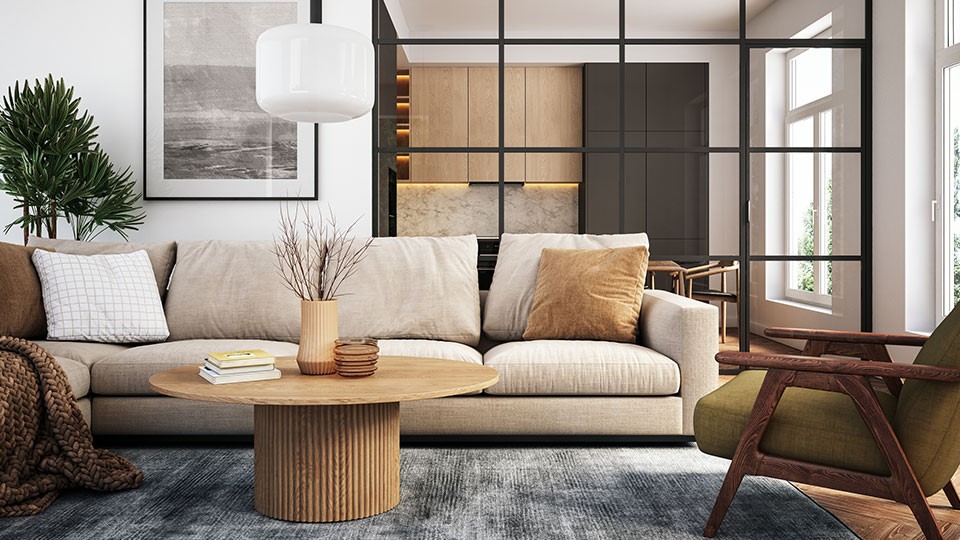Introduction
In the ever-evolving world of interior design, a captivating trend has emerged—the fusion of old and new. This enchanting concept involves blending vintage and contemporary elements to create spaces that are both nostalgic and modern. By seamlessly integrating cherished relics from the past with the sleek lines and innovative designs of the present, interior designers are able to achieve a harmonious balance that is visually appealing and emotionally resonant.
The Appeal of Fusion Design
The fusion of old and new elements in interior design holds a unique charm that captivates the senses. The juxtaposition of vintage and contemporary elements creates a captivating visual narrative that tells a story of heritage and progress. The presence of vintage pieces evokes a sense of nostalgia and history, while the contemporary touches infuse vitality and freshness into the space. This contrast not only creates a visually striking atmosphere but also stirs emotions and memories, making the space more personal and inviting.
Vintage elements, such as antique furniture, ornate mirrors, or vintage textiles, bring a sense of timelessness and authenticity to the space. These pieces carry with them stories of the past, connecting us to our heritage and reminding us of the beauty and craftsmanship of bygone eras. The worn patina of aged wood, the intricate carvings on antique furniture, or the rich texture of vintage fabrics evoke a sense of warmth and charm that cannot be replicated by contemporary designs alone.

On the other hand, contemporary elements, with their clean lines, minimalist aesthetics, and innovative materials, bring a sense of progress and modernity. They add a touch of sophistication and functionality, elevating the overall design to a new level. Sleek furniture with bold geometric shapes, modern lighting fixtures with minimalistic designs, and state-of-the-art appliances all contribute to the contemporary aspect of fusion design. These elements create a sense of innovation and reflect the ever-evolving nature of design trends.
A solid suggestion for anyone looking into achieving this fusion with ease would be the mario bellini sofa thanks to its premium leather and variety of colors
Key Principles of Successful Fusion Design
To achieve a successful fusion of old and new elements, certain key principles should be considered. Balance is crucial, ensuring that neither the vintage nor the contemporary elements overpower one another. Each should be given its own space to shine while coexisting harmoniously. Consider the scale and proportion of each element to create a visually pleasing composition. For example, a vintage statement piece can be complemented by contemporary accessories or vice versa. The goal is to strike a balance where the design feels cohesive and intentional.
Respect for the original features is also paramount. When integrating vintage elements, it is important to preserve their integrity and unique characteristics. This may involve restoring and refinishing vintage furniture, reupholstering vintage fabrics, or highlighting original architectural details. By respecting and enhancing the authenticity of vintage pieces, they become the focal points that anchor the design, adding depth and character to the space.
Additionally, incorporating contrast—such as pairing a vintage chandelier with sleek modern furniture or juxtaposing an antique wooden table with contemporary acrylic chairs—creates a dynamic interplay that enhances the visual impact of the space. Contrasting textures, colors, and finishes can create a sense of tension and intrigue, elevating the overall aesthetic. It is this tension between the old and the new that creates a visually stimulating environment.

Case Study: Analysis of Successful Fusion Interiors
Let us delve into the world of fusion design by examining a few inspiring interiors that have seamlessly blended vintage and contemporary elements. In a modern living room adorned with a vintage rug and mid-century modern furniture, the warm earth tones of the rug create a focal point, while the clean lines of the furniture and modern artwork add a contemporary touch. The blending of these elements creates a space that feels simultaneously cozy and stylish. The vintage rug grounds the room and adds texture, while the modern furniture brings a fresh and sleek aesthetic.
In a kitchen that combines a rustic farmhouse table with sleek, minimalist cabinets, the fusion of old and new creates a captivating atmosphere. The farmhouse table becomes the heart of the space, imbuing it with a sense of warmth and history, while the modern cabinets and stainless steel appliances bring functionality and a touch of sophistication. The fusion of these elements results in a kitchen that is both charmingly vintage and efficiently contemporary. The juxtaposition of the rough, weathered surface of the table against the smooth, glossy finish of the cabinets creates an interesting visual contrast that adds depth to the design.
Tips for Achieving a Successful Fusion
For those seeking to embark on their own fusion design journey, here are some practical tips to consider:
- Begin by selecting a focal point, such as a cherished vintage piece, and build the design around it. Let it guide your choice of colors, textures, and styles. This will help create a cohesive narrative throughout the space.
- Embrace contrast by juxtaposing different textures, colors, and eras to create an engaging visual experience. Pair rough, weathered surfaces with smooth, glossy finishes or mix vibrant contemporary artwork with antique furniture. The key is to find a balance that highlights the unique qualities of each element.
- Incorporate modern elements subtly to avoid overpowering the vintage charm. This can be achieved through the use of sleek lighting fixtures, contemporary artwork, or minimalist furniture. The goal is to enhance the vintage elements without overshadowing them.
- Pay attention to lighting, as it can enhance the ambiance and showcase the fusion of old and new elements beautifully. Consider combining vintage-style fixtures with modern LED lighting for a unique and balanced effect. Lighting can set the mood and highlight the architectural features of the space.
- Trust your instincts and let your personal style shine through the design. Experiment, take risks, and enjoy the process of blending different elements to create a space that reflects your individuality. Fusion design allows for a creative exploration of styles, so don’t be afraid to think outside the box and create something truly unique.

Conclusion
The fusion of old and new elements in interior design offers a realm of endless possibilities. By artfully merging vintage and contemporary elements, designers and homeowners alike can create spaces that exude charm, character, and a sense of timelessness. The interplay between the past and present not only adds visual intrigue but also fosters a deep emotional connection. As we continue to navigate the ever-changing landscape of design, let us celebrate the fusion of old and new, embracing the richness that comes from blending the nostalgia of the past with the innovations of the present. By merging vintage and contemporary elements, we can create truly captivating spaces that are a testament to our appreciation of both history and progress.

Leave a Reply